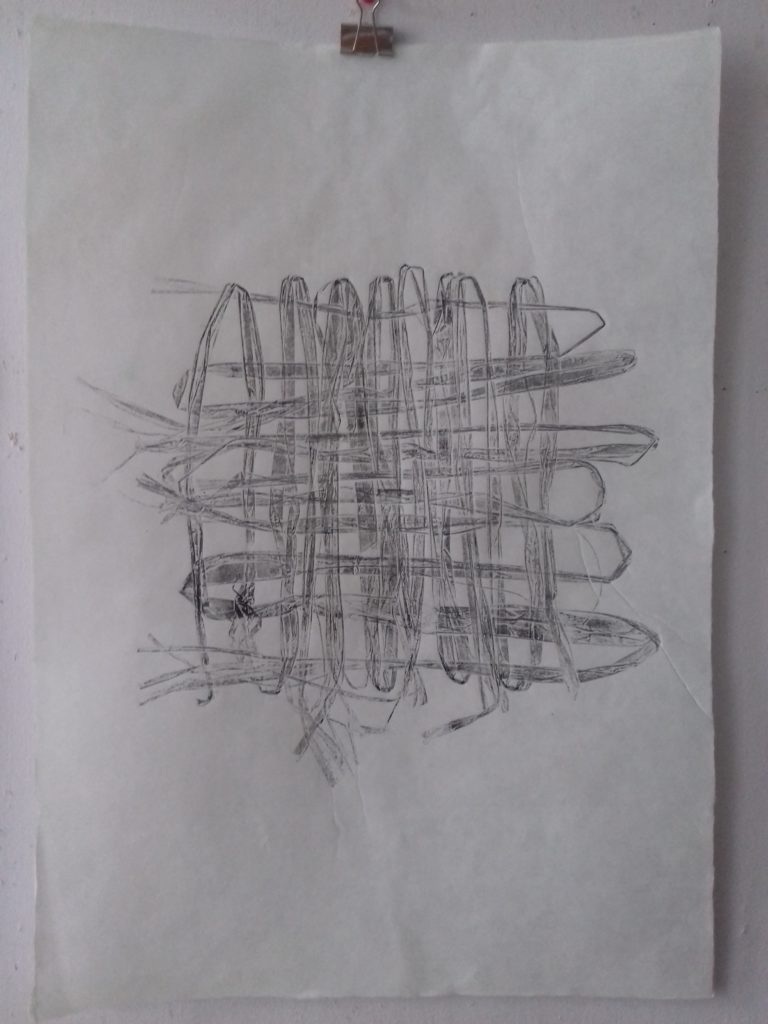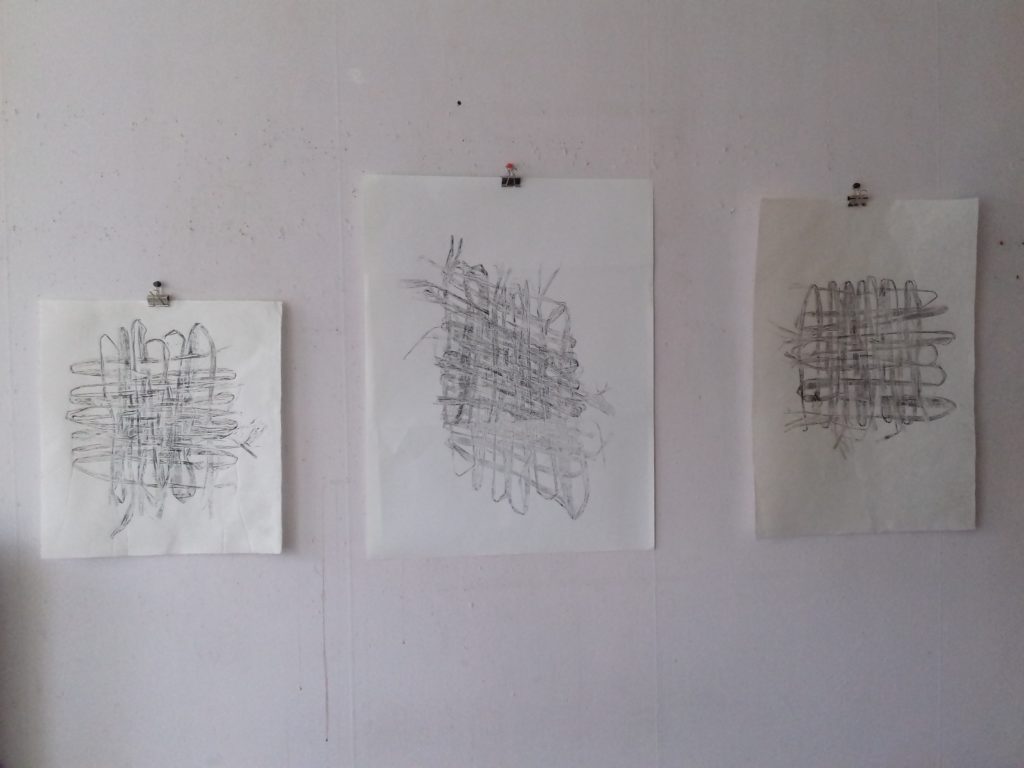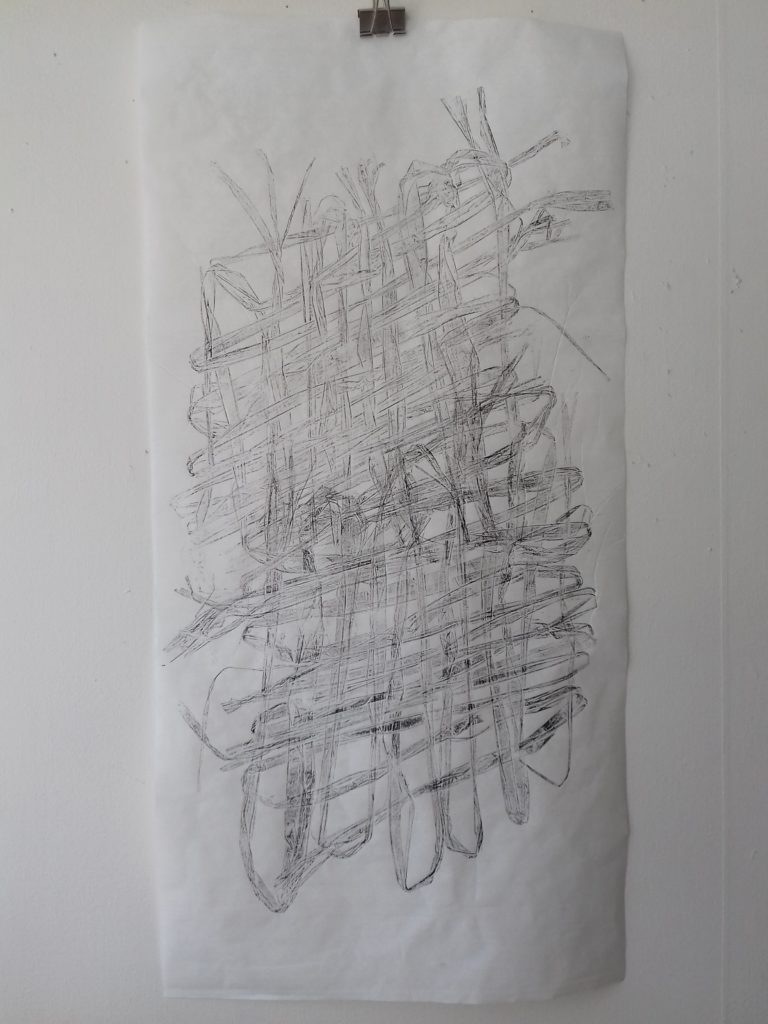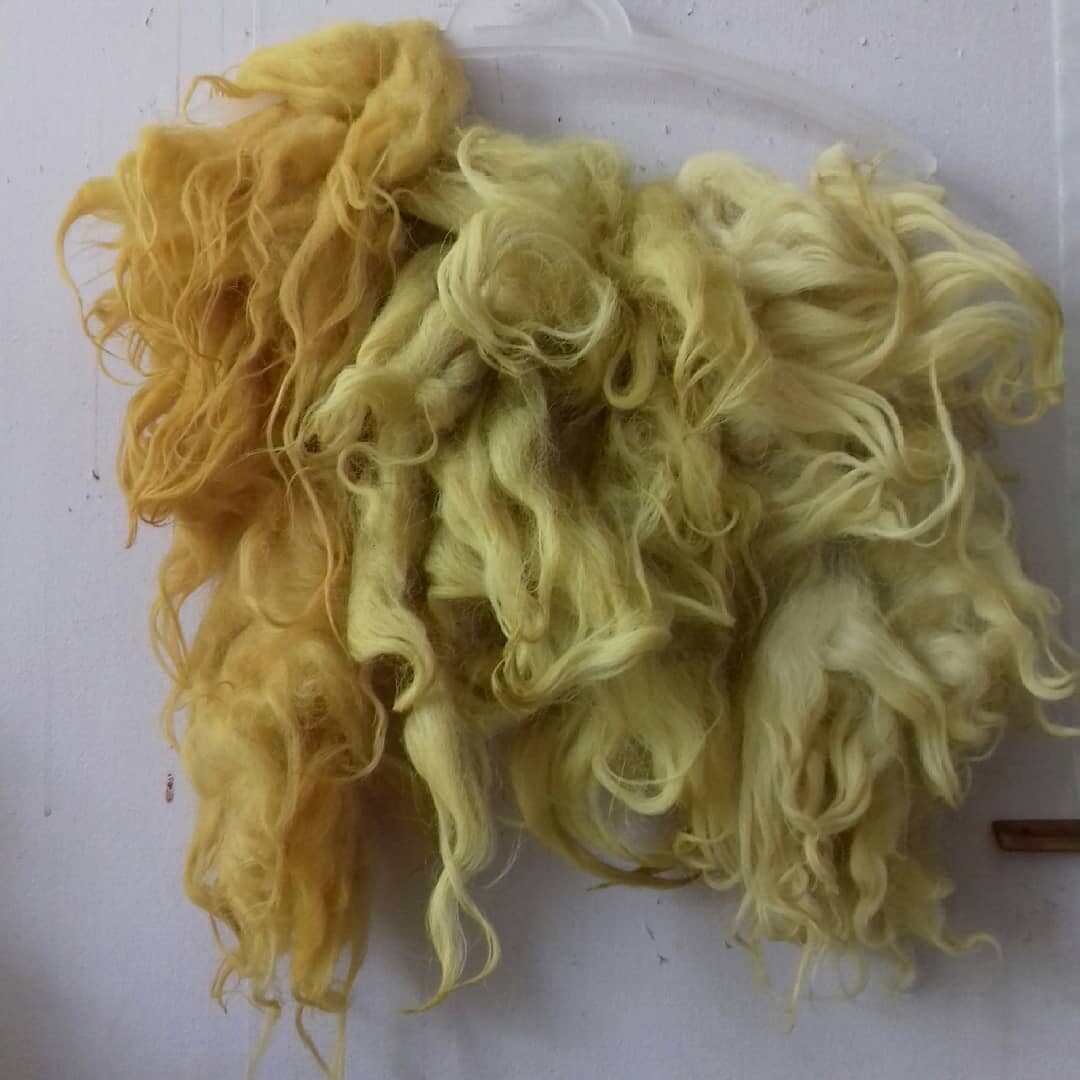I have been making prints with fibers lately rather than plants. After all, fibers make textile and paper and some of the most beautiful fibers are natural, from plants like cotton, flax and hemp or from animals like wool or silk.
I want to mention the work of Molly Haynes. She is a weaver and uses unusual materials like sisal and lobster rope. She has also made large and beautiful prints with these materials. They show the energy that is in the material and she works with that rather than forcing it in another direction.
It made me think of the rope that I collected on the beach, probably lobster rope among it as well, and that I could print with that, and I did. And I like the print, but the way I did it felt like it was actually someone elses idea. But also, that I could start from there to make something more of my own.
It is a fine line I sometimes don´t know where it is.. I don´t feel so strongly about copyright but I want to respect people who do. In the case of a craft, for example basketry, it is not just about being all original and finding out the wheel once more. It is also about developing and passing on knowledge and learning skills. From there on the personal or uniqueness will show in the handmade. And I really feel this is true for art too. We depend on what has been made in the past, we need that and what we see around us to be able make something of our own.
I have more thoughts about this subject. Is it a difference if you borrow from a known or from a not so known artist/designer. When do you think it is stealing, or interpreting or improving or something else? Young children learn through imitation, why is it different for adults? Maybe it is deeply rooted in who we are. When given the choice between intellectual ownership and sharing and spreading the good and the new, I tend to the latter. Because it enables people to grow, to cure etcetera. And because I believe when your voice is unique, you will ¨float to the surface” as we say in dutch. It means as much as, you will be seen and recognized.
What I mean to say is, that the subject is more complicated than at first sight. At artschool I learned that art is about the process maybe more than the product. The product stands not on itself but in its context like the road the artist makes. How did she get there and and how does she relate to her surrounding for example. This was some time ago, I admit..but in this way looking at art, you can not steal it.
Back to my printing; what follows are prints from weavings I made with raffia. They show how the raffia bends and kinks, the crumples, some transparency and the loose rythm of the weaving.



